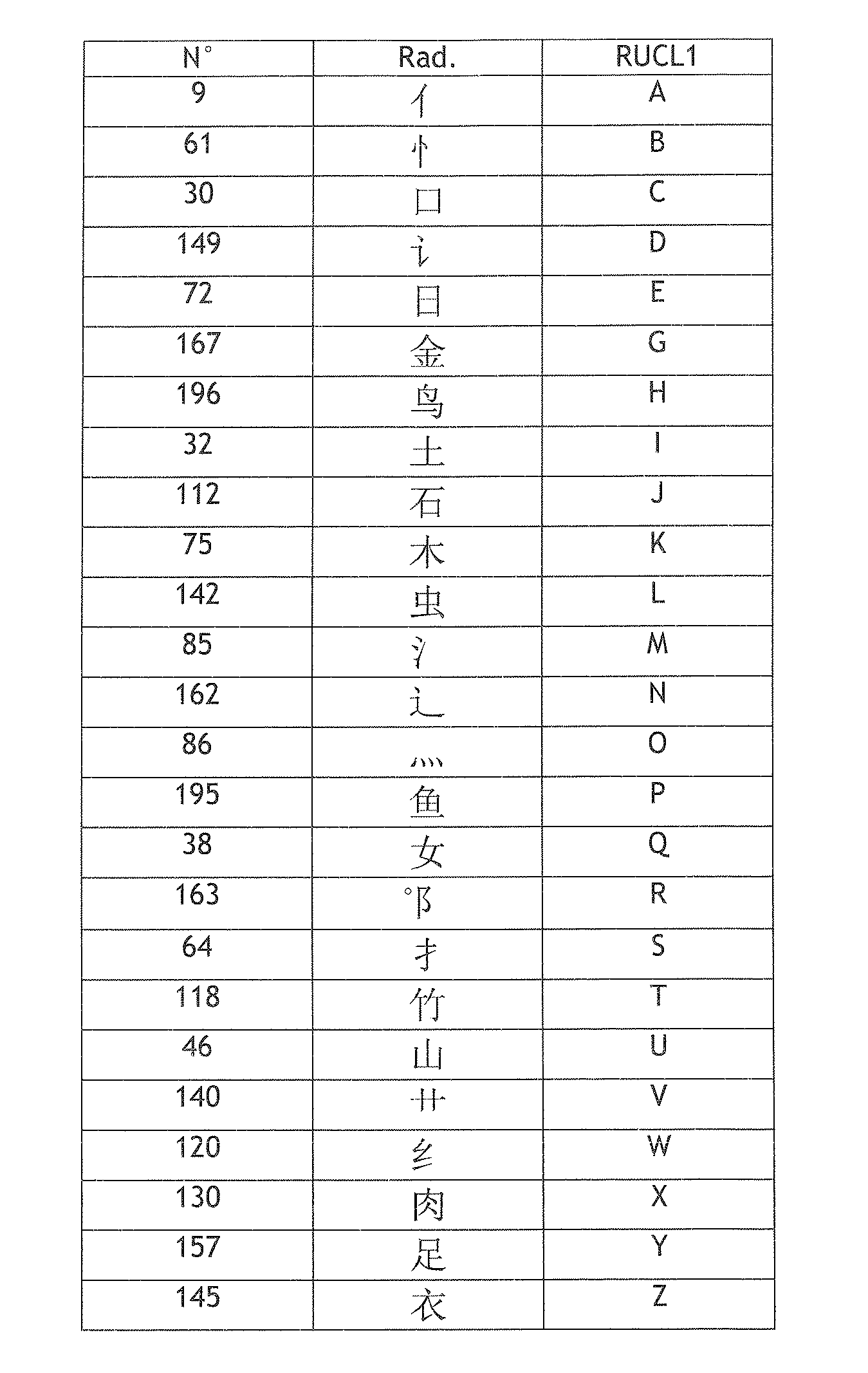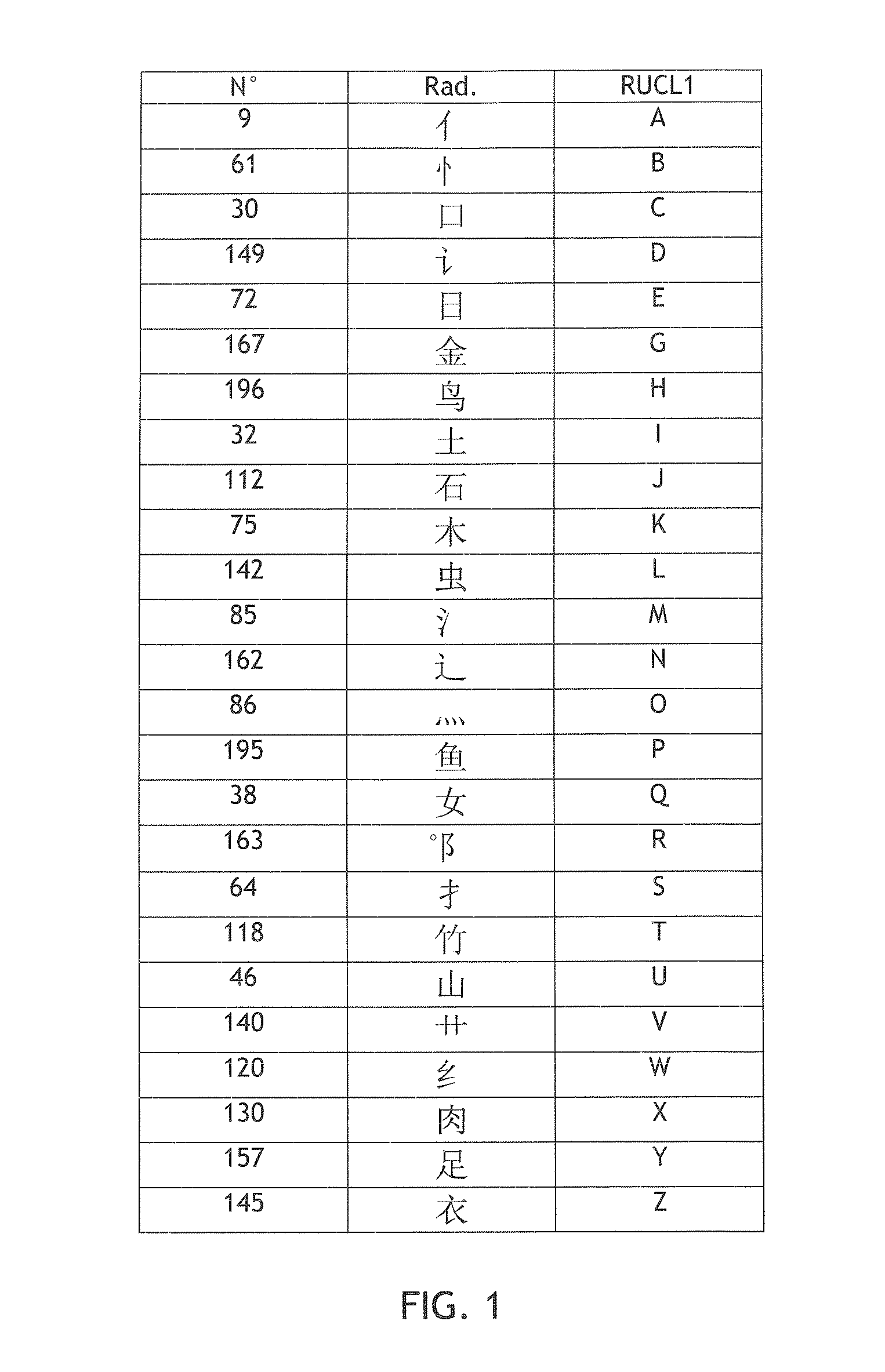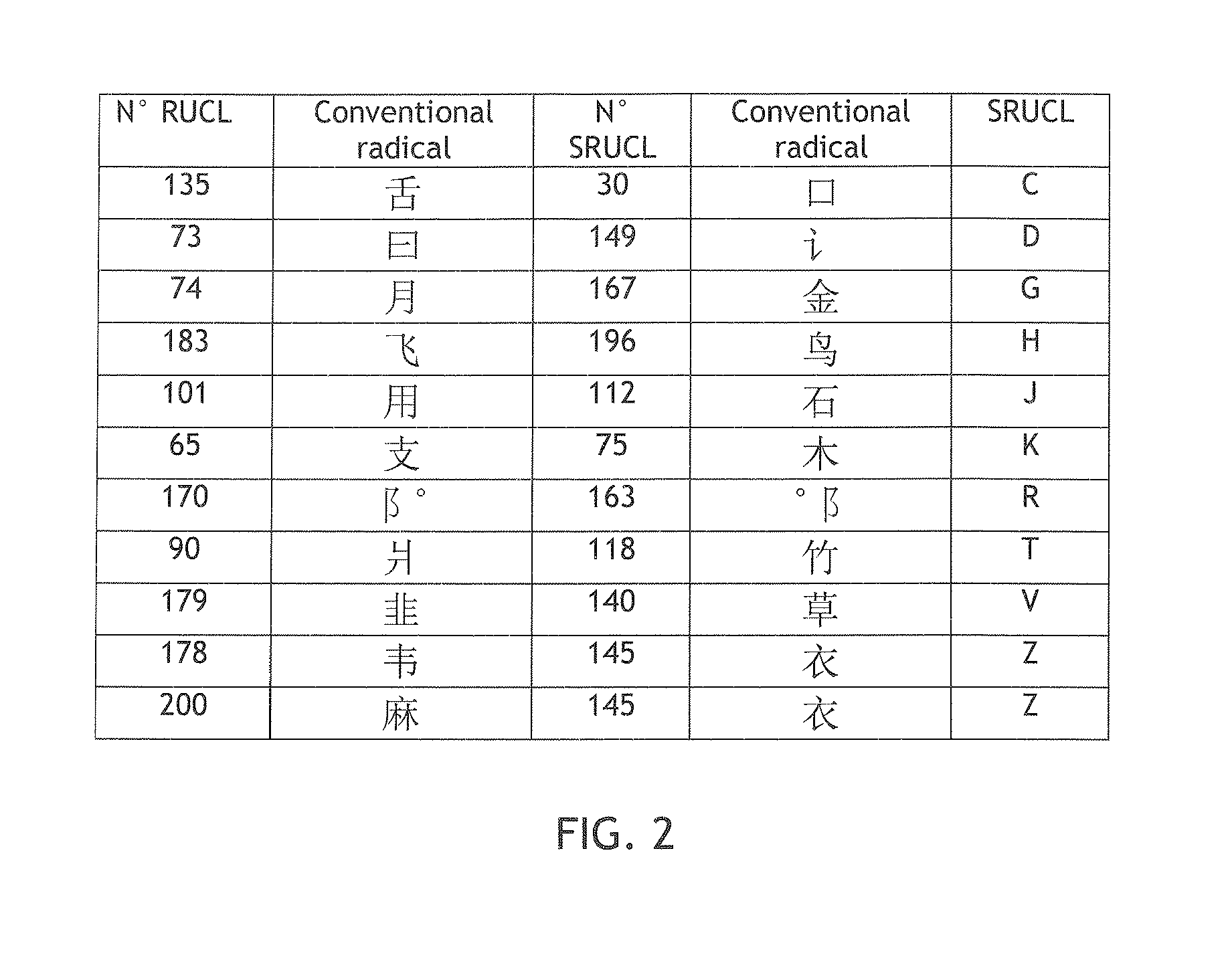Transliterating methods between character-based and phonetic symbol-based writing systems
a writing system and phonetic symbol technology, applied in the field of transliterating one writing system into another writing system, can solve the problems of difficulty in learning the meaning of a transcribed word, difficulty in memorizing the large number of characters that are needed for daily use, and difficulty for the learner to know which character to use, so as to facilitate the learning of languages
- Summary
- Abstract
- Description
- Claims
- Application Information
AI Technical Summary
Benefits of technology
Problems solved by technology
Method used
Image
Examples
Embodiment Construction
[0059]The following description provides one example of embodiment of the method for transliterating an at least partially phonetic symbol-based writing system including symbols into a complex character-based writing system including characters and vice et versa.
[0060]This example takes the official Chinese language (also called Beijing dialect) of the People's Republic of China (called “Putonghua”), Taiwan (called “Guoyu”) and Singapore (called “Huayu”), hereafter called “Mandarin”, although it is also possible to consider another Chinese languages or dialects such as Shanghainese (“Wu”), Cantonese (“Yue”), etc. or even another language using Chinese characters such as Japanese, Korean or (old) Vietnamese.
[0061]Thus, the method described more in detail is a method for transliterating Chinese characters into a phonetic writing system such as an alphabetic writing system which is Latin alphabet and vice et versa. This method of transliteration not only transliterates the Mandarin pho...
PUM
 Login to View More
Login to View More Abstract
Description
Claims
Application Information
 Login to View More
Login to View More - R&D
- Intellectual Property
- Life Sciences
- Materials
- Tech Scout
- Unparalleled Data Quality
- Higher Quality Content
- 60% Fewer Hallucinations
Browse by: Latest US Patents, China's latest patents, Technical Efficacy Thesaurus, Application Domain, Technology Topic, Popular Technical Reports.
© 2025 PatSnap. All rights reserved.Legal|Privacy policy|Modern Slavery Act Transparency Statement|Sitemap|About US| Contact US: help@patsnap.com



